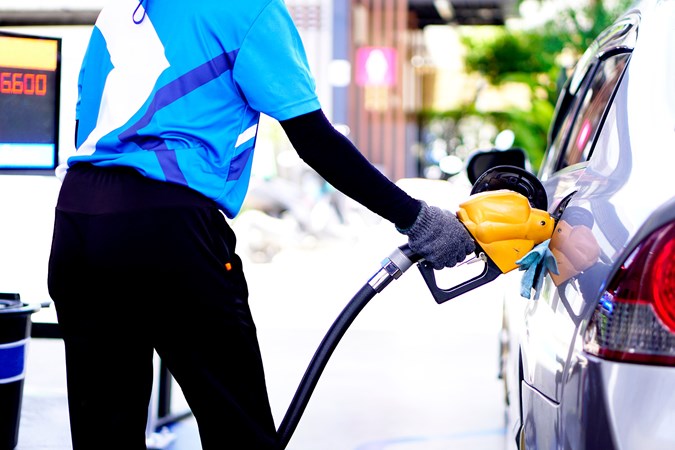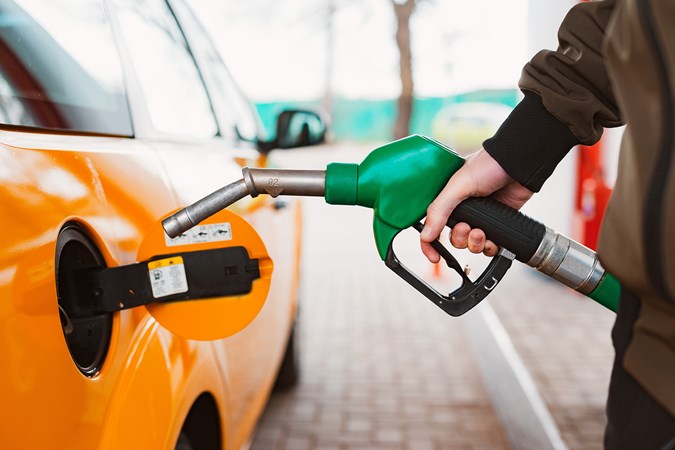
We’ve all been there. You pull into a fuel station at the end of a long day, tired and keen to get home, you pick up the first available pump. Then it hits you — you’ve put the the wrong fuel in your car. First things first: do not drive your car anywhere. If you’ve already started driving, find a safe place to stop. On a busy motorway or road, get yourself to a safe location outside of the vehicle. Now that’s out the way, lets talk about what you should do next.
You need to act quickly and do the right thing to avoid causing serious damage to your car’s engine. In this guide, we’ll explain what damage could be done and run through what to do next.
What to do if you put the wrong fuel in your car
Whatever way you’ve misfuelled (petrol in diesel or diesel in petrol), the first thing to do is not to panic. Here’s what you should do:
- If you’re still in the filling station, don’t start your car
Whatever you do, don’t start the engine. If you do, you’ll end up mixing both types of fuel which can make it trickier to clean and it can also damage your engine.
- Move your car to a safe place
Advise the fuel station what’s happened, put the car into neutral and push it somewhere safe.
- Phone for help
Call a garage, mechanic or your breakdown service and let them know what’s happened. They should be able to come out to the car to drain the fuel tank and clean the car’s system. If they can’t do it in situ, the car will be recovered to a garage.
What happens if you put petrol in a diesel car?
Putting petrol in a diesel car can be seriously damaging. That’s because diesel engines use the fuel as a lubricant but petrol is corrosive and can damage the inside of the engine. Not only that, petrol (especially E10 petrol) reduces the lubrication of your car’s fuel pump, meaning different components will rub together without protection. This can cause damage and lead to metal particles forming in the fuel.
If you start the car, those metal particles spread and cause damage throughout its fuel system which can be very expensive to repair. If you’ve started driving before you realise you’ve misfuelled, these tell-tale signs will soon let you know:
- The engine struggles to start.
- The exhaust emits a lot of smoke when driving.
- The engine is louder than normal.
- The car loses power at high speed after about 20 minutes of driving.
- The engine won’t stop once it’s running.
What happens if you put diesel in a petrol car?
Accidentally putting diesel in a petrol car needs rectifying quickly. It’s not as serious as misfuelling a diesel car; at worst, the fuel system clogs up so it and the fuel tank need draining. It’s hugely inconvenient but shouldn’t cause any lasting damage to the engine.
If there’s only a very small amount of diesel in your fuel tank (5% of the tank’s capacity or less) you might get away with misfuelling. If this is the case, filling the rest of the tank to the brim (which can be expensive) with petrol might be enough to remedy the situation.
Nevertheless, fully draining the tank is really best for the car as it should prevent subsequent problems. If you’ve run the engine, it’s wise to also change the fuel filter. If you end up putting diesel in a petrol car, look out for:
- The engine misfiring.
- The engine refusing to start or cutting out.
- The exhaust emitting lots of smoke when you’re driving.

Does insurance cover putting the wrong fuel in your car?
This will depend on the specific policy you have. If your car insurance provider does cover misfuelling, you should contact them when you realise this has happened. The insurer may send someone out to drain the fuel tank or it might be a cost you can claim back from them later .
Bear in mind that not all insurers cover misfuelling. Even if your policy does cover this, there could be restrictions about what you can claim for. Some insurers only cover the cost of draining and cleaning while others will also pay to repair engine damage. Either way, double check your policy details so you know exactly what’s covered.
If you’re a member of a breakdown service, your policy may cover misfuelling. If not, they’ll still send someone out to you to sort the problem out, but you will be charged for it.
How easy is it to misfuel?
It’s easier than you think, especially with a petrol car. Typically, petrol nozzles are slimmer and fit into a diesel tank so if you’re not concentrating, it’s easy to put petrol into a diesel car, especially if you regularly swap between motors. If that’s you, it’s a good idea to pay particular attention when you’re at the pumps.
On the other hand, diesel nozzles are usually a little wider and don’t really fit into a petrol tank filler.

How can you prevent misfuelling your vehicle?
You’d be surprised at how many people put the wrong fuel in their vehicle — 150,000 UK drivers, to be exact, according to recent statistics from the RAC. But there are a few handy tips to prevent misfuelling from happening in the future.
- Place reminders in your car, such as a sticker inside the fuel cap.
- Carefully read the pump labels and fuel grade indicators before refuelling.
- For diesel vehicles, consider using a stopper in the filler neck so a petrol nozzle can’t fit.
FAQs
How much does it cost if you put the wrong fuel in a car?
The cost is very much dependant on whether you have started the ignition or not. Your looking at around £190 for a specialist to drain the fuel tank, if the engine is not yet ignited. However, if the engine has been switched on it could be closer to £5,000.
How long does it take to remove the wrong fuel from your car?
Draining the wrong fuel from your vehicle can be either a lengthy process or a quick task, depending how much incorrect fuel in sitting in the tank. If your car is unrun this could take up to 20 minutes and you’ll be ready to hit the roads again. But, run vehicles generally take longer, due to the extra process of flushing the fuel system, so this could take almost an hour or two.
Just so you know, we may receive a commission or other compensation from the links on this website - read why you should trust us.








